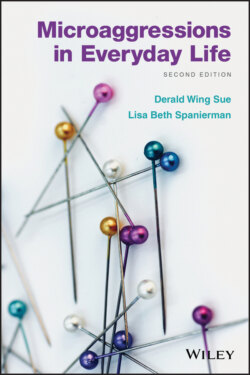Читать книгу Microaggressions in Everyday Life - Derald Wing Sue - Страница 5
Preface
ОглавлениеMicroaggressions in Everyday Life, Second Edition is about the damaging consequences of everyday prejudice, bias, and discrimination on the lives of marginalized groups in our society. Building on the highly successful first edition, this completely revised and updated version analyzes the most recent research findings and current scholarly thinking on the manifestation, dynamics, and impact of microaggressions across a broad range of marginalized groups and settings. Microaggressions theory has become integrated into many professional fields including psychology, education, law, medicine, and public policy and has become part of mainstream discourse (e.g., print, television, and talk radio) and social media (e.g., internet blogs and Facebook). The concept of microaggressions, which initially focused on race and communities of color, has been applied to many marginalized groups in society (women, LGBTQ populations, people with disabilities, religious minorities, and persons living in poverty), and in a multitude of settings (classrooms, public spaces, and places of employment). In 2017 the word “microaggression” was formally added to the Merriam‐Webster Dictionary, thereby making the term a part of the American lexicon.
Those of you familiar with the first edition will note that major changes have occurred in coverage and emphasis due to my collaboration with Dr. Lisa B. Spanierman, an expert scholar and researcher on the psychosocial costs of racism to White Americans, the detrimental impact of microaggressions to targets, and the roles and responsibilities of White racial justice allies. Her expertise in this revised edition offers a fresh contemporary look, incorporates new and important topical areas, and applies microaggression research to everyday life. Although there are a number of major organizational and topical changes, we have maintained three key features that our readers consistently declare as extremely helpful: (a) using real‐life examples or case vignettes at the opening of most chapters to illustrate the upcoming content; (b) employing contemporary interpersonal, social, and political events that anchor the concepts of explicit and implicit bias; and (c) concluding each chapter with a section titled “The Way Forward” that provides concrete future actions/directions to combat microaggressions.
Organizationally, we have eliminated three chapters from the first edition that deal separately with racial microaggressions, gender microaggressions, and sexual‐orientation microaggressions. Instead, we have incorporated these group‐based microaggressions throughout the chapters and discussed microaggressions in an integrated fashion, pointing out similarities and differences between the targeted groups.
